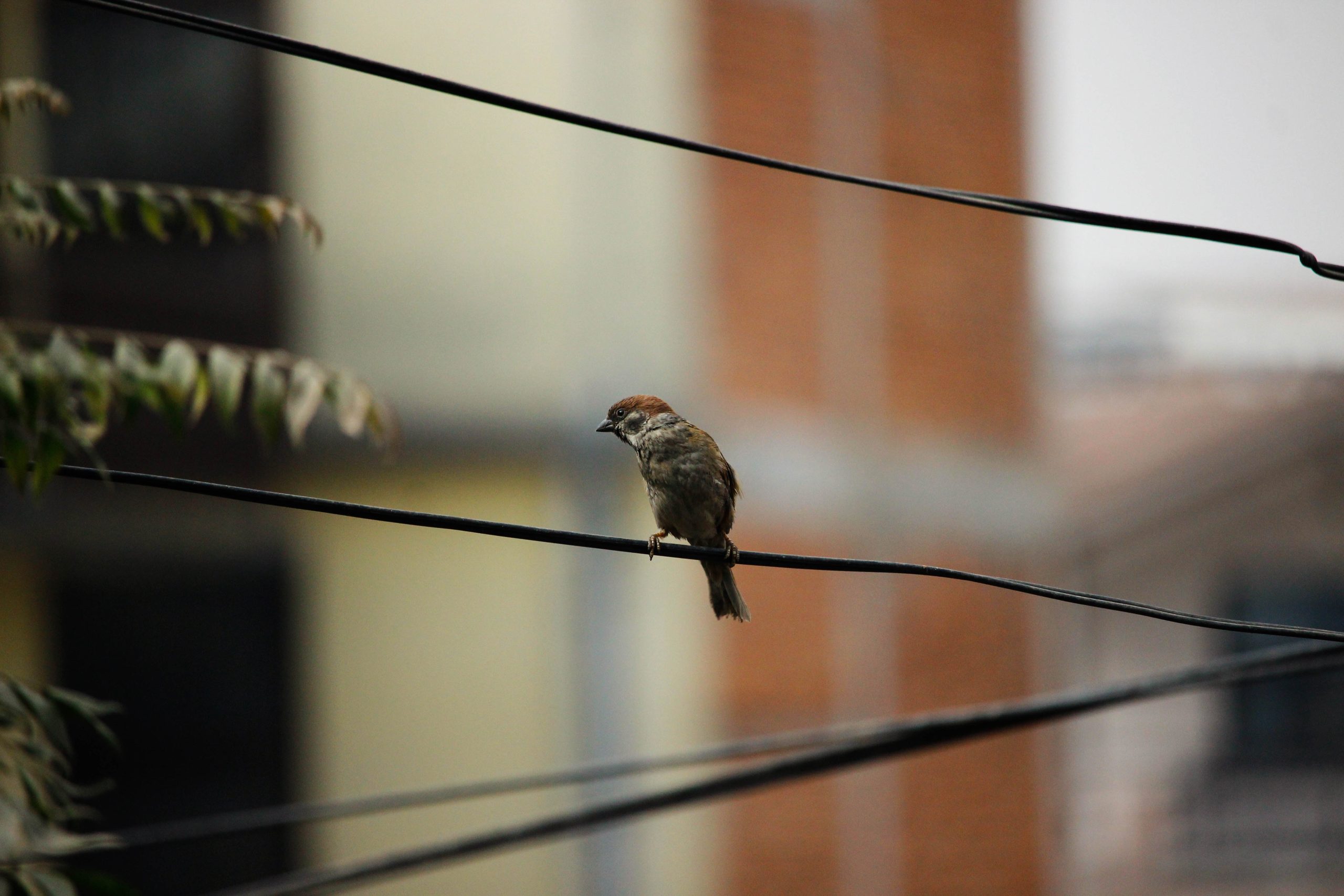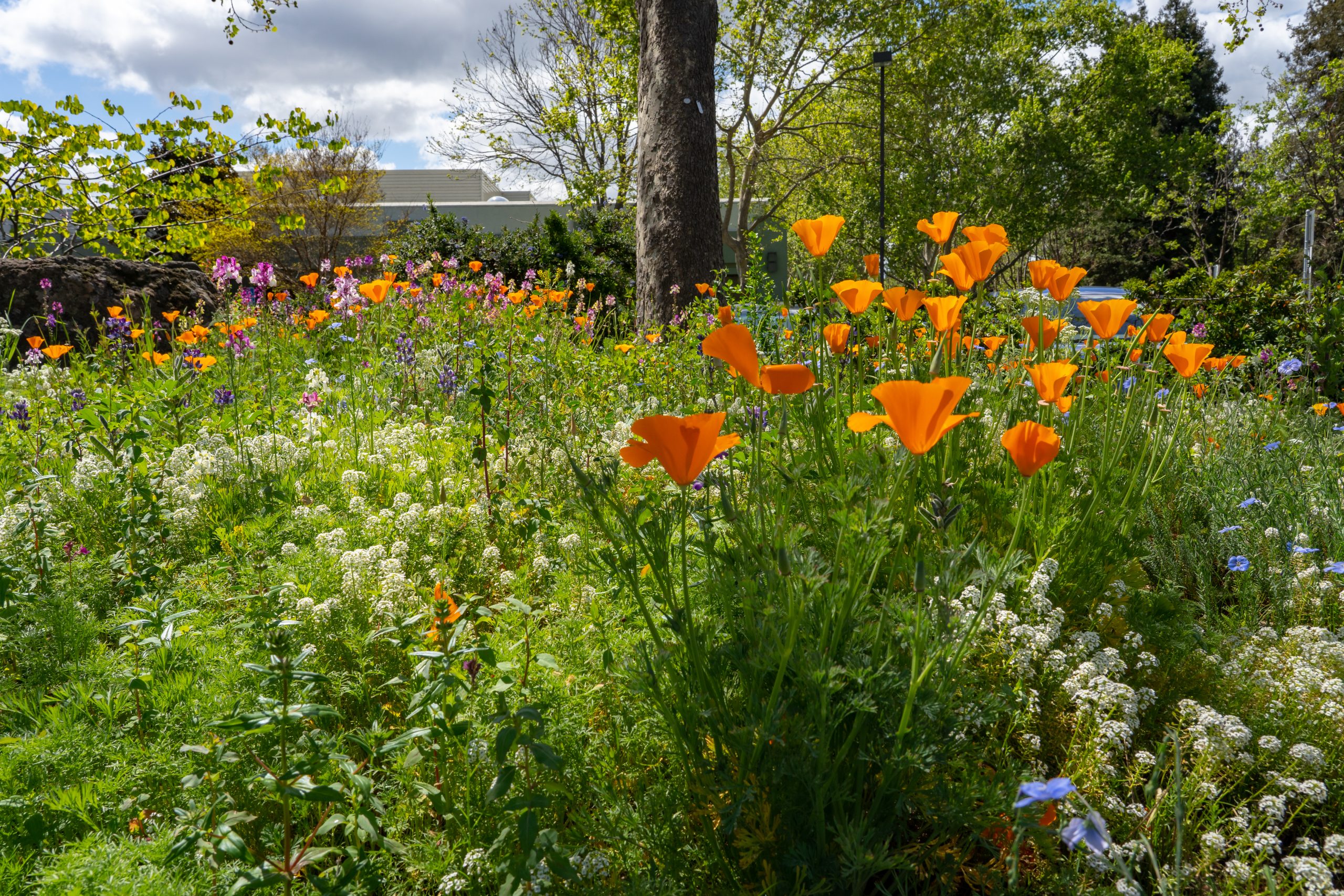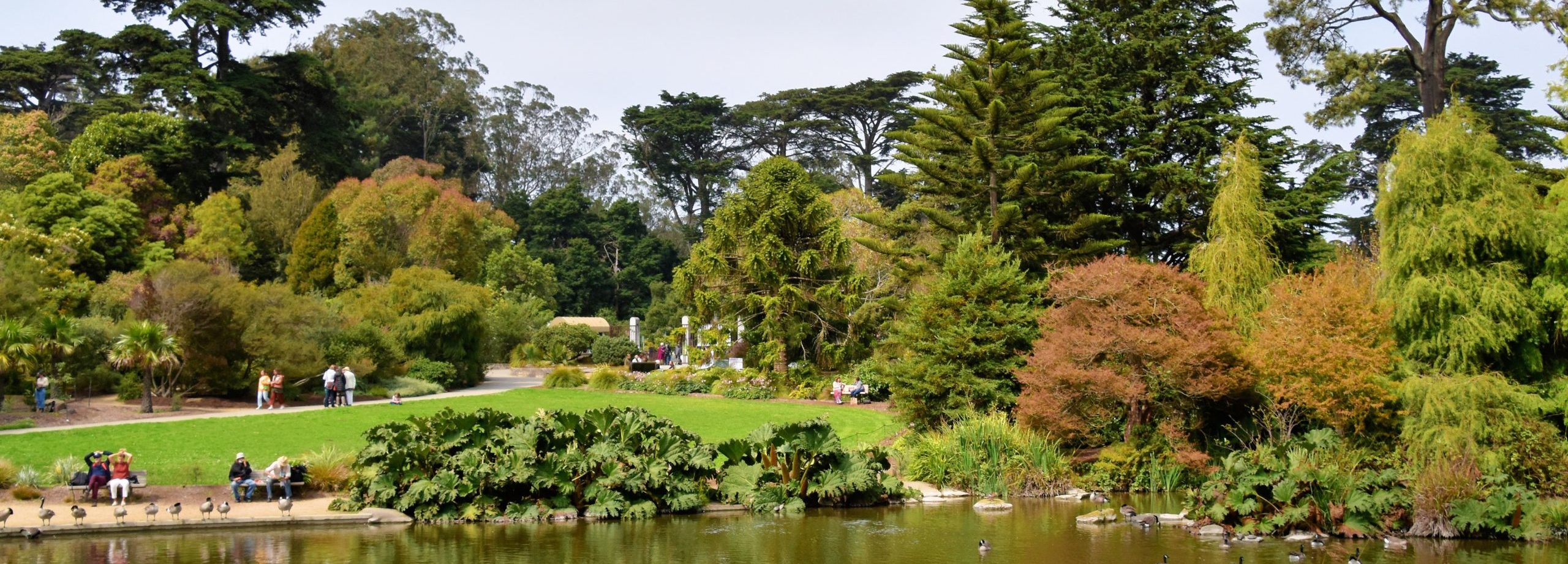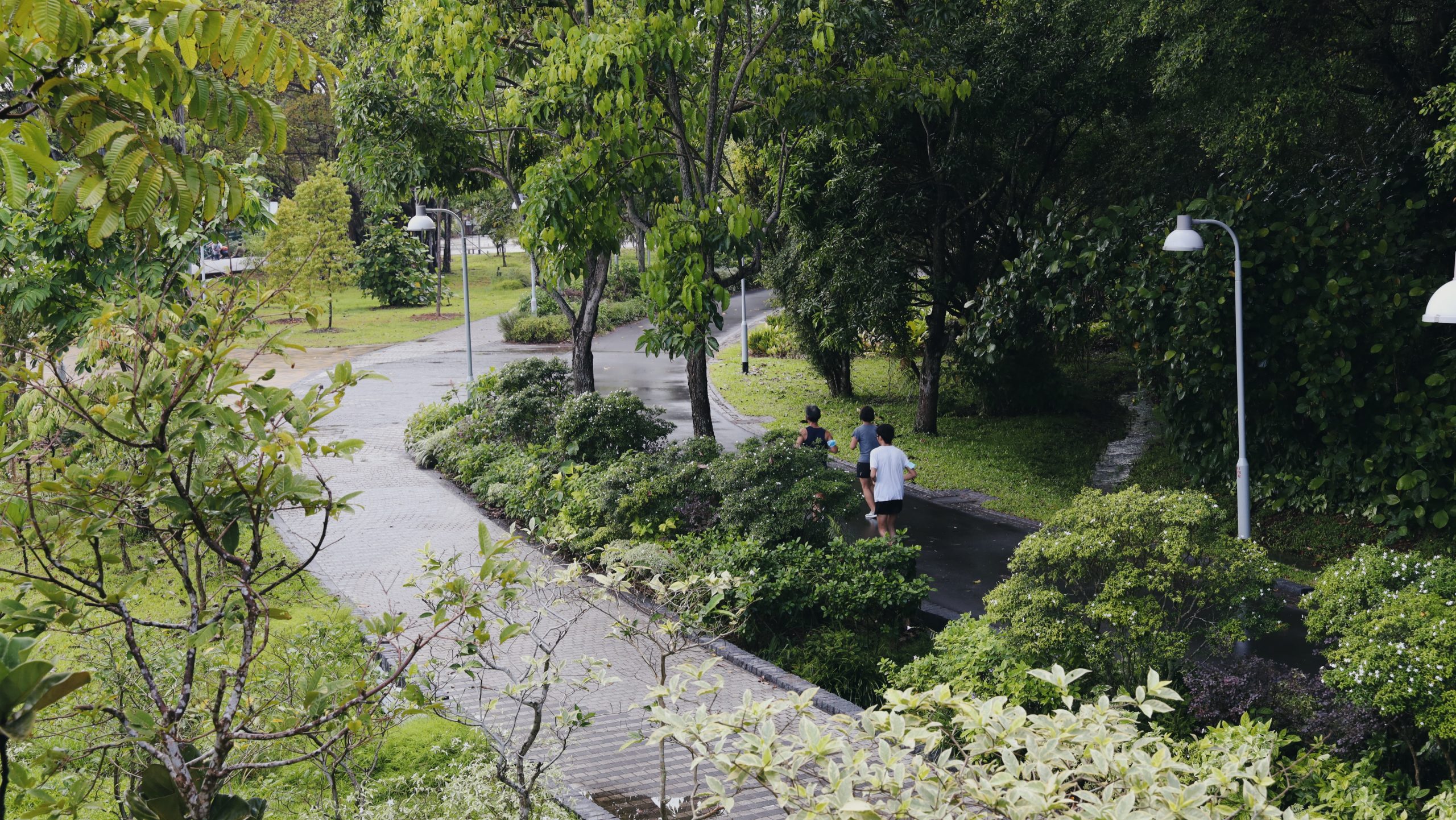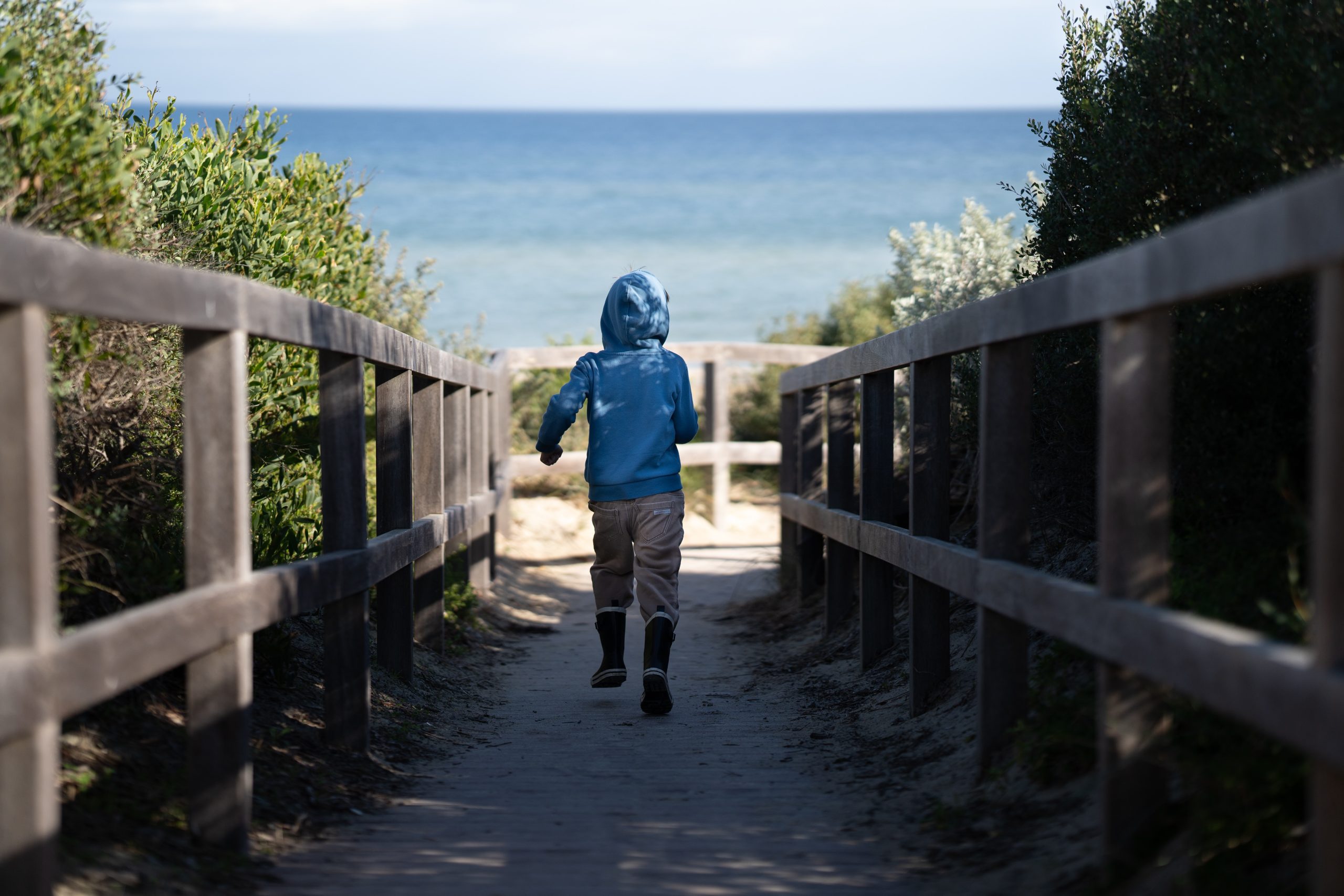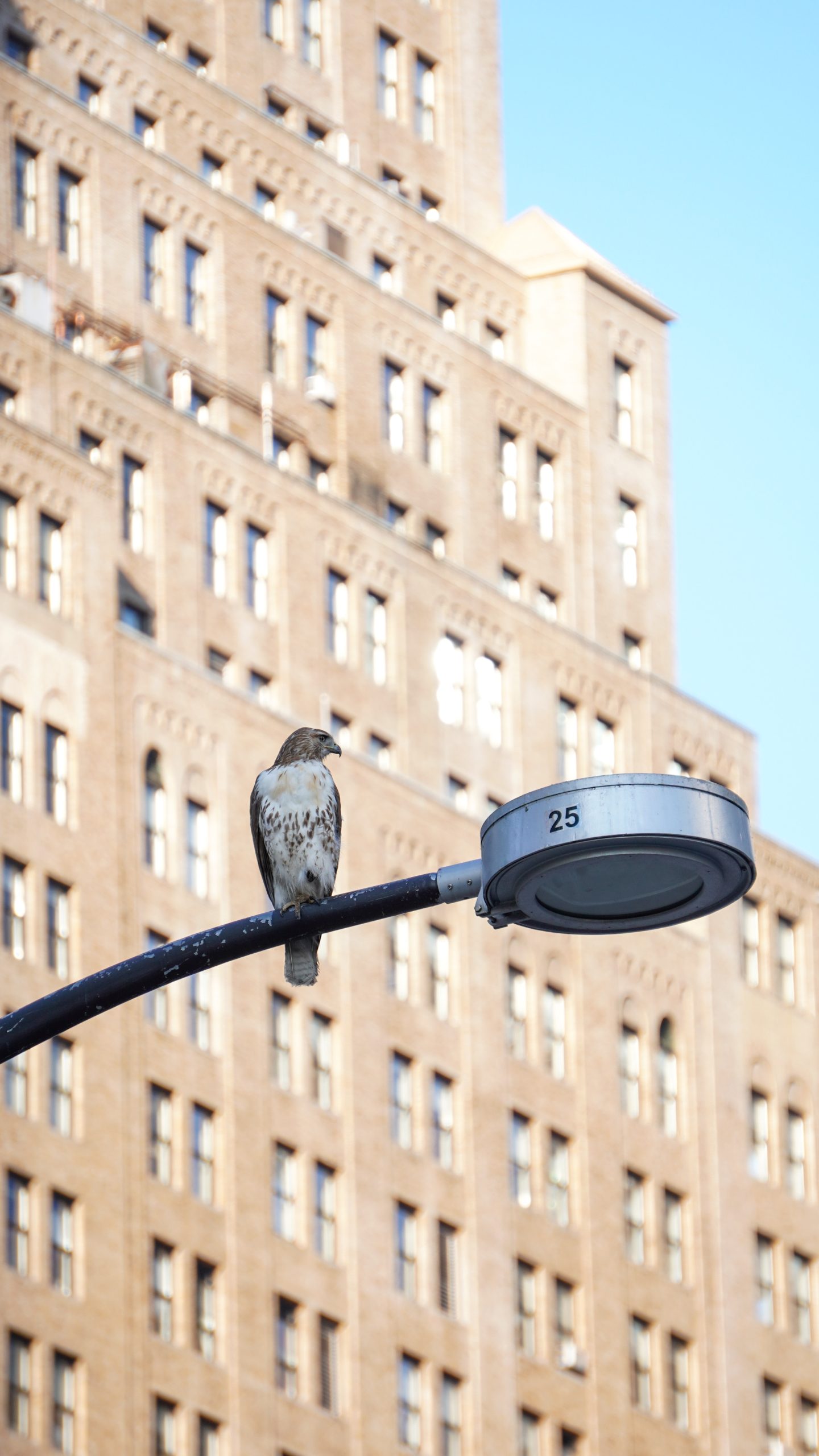Promote views of greenspace from within classrooms to bring the benefits of outdoor greening into the classroom environment and has been linked to attention and stress recovery in high school students. Bird blinds and wildlife viewing platforms can increase opportunities for wildlife viewing.
Green Schoolyards
Image credits: Vitolda Klein, Unsplash
Green schoolyards aim to create a park-like setting for children to play and learn in, an alternative to traditional, pavement-dominated schoolyards. Common features of green schoolyards include trees, water features, nature play areas, and vegetable and native gardens.
Biodiversity role:
Green schoolyards can play a similar role as neighborhood parks, providing habitat for small animals and serving as stepping stones within the urban matrix. Green schoolyards also help educate children and parents about native ecosystems and biodiversity.
Human health role:
Maximizing the area of greenspace throughout schoolyards has a multitude of health benefits including improvements in: air quality and overall health, concentration, physical activity levels, and lower blood pressure. Additionally, greening school yards provides reductions in heat stress and UV exposure.
Key tensions and tradeoffs:
Certain aspects of nature play and the potential for children interacting with wildlife may create risks for children. Careful consideration of the types of wildlife that a schoolyard can safely support should inform their planning and design. Though green schoolyards typically have higher installation and maintenance costs, their economic benefits may outweigh the costs.






Create small habitat patches and resources such as pollinator gardens, bird boxes, and water features. Provide different habitat types and structural complexity within habitats. Tall grasses and bushes help to support imaginative play. Wildlife viewing opportunities can support educational benefits of habitat.
Reduce the use of impervious surfaces and instead using softer natural ground surfaces such as wood chips, mulch, or decomposed granite can support safe play and habitat connectivity, while reducing heat, erosion, and run off.
Natural loose parts such as downed logs, leaf litter, seeds, rocks, and pinecones can be used for imaginative play while also providing habitat for biodiversity such as worms, toads, chipmunks, and more. Avoid clearing leaf litter and debris to maintain nature pieces and habitat.
Plant permanently fruiting plants to provide educational opportunities and food for wildlife. Fruit trees also provide shade and cooling and offer active play opportunities. Gardens provide educational and nutritional benefits for children while attracting multiple species of beneficial insects.
Place trees to provide shading on playgrounds, gathering spaces, and outdoor classrooms reducing UV exposure, increasing physical activity, and mitigating urban heat island effect. Tree canopy coverage is also associated with higher test scores and improved cognitive function.
Relevant Design Details
Design details are non-site specific strategies to include throughout the design and management of all urban greenspaces. Typical contexts and documents in which these strategies may be relevant include: (1) Project design and construction documents (ex. site plans and design details, planting schedules, and specifications); (2) Design standards and typical details for a park system or other greenspace type; (3) Operations and management plans.
s

